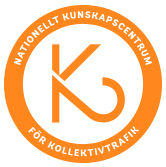The objective of this study is to provide a better understanding of the potential of using Artificial Intelligence (AI) to improve Public Transport (PT), by reviewing research literature. The selection process resulted in 87 scientific publications constituting a sample of how AI has been applied to improve PT. The review shows that the primary aims of using AI are to improve the service quality or to better understand traveller behaviour. Train and bus are the dominant modes of transport investigated. Furthermore, AI is mainly used for three tasks; the most frequent one is prediction, followed by an estimation of the current state, and resource allocation, including planning and scheduling. Only two studies concern automation; all the others provide different kinds of decision support for travellers, PT operators, PT planners, or municipalities. Most of the reviewed AI solutions require significant amounts of data related to the travellers and the PT system. Machine learning is the most frequently used AI technology, with some studies applying reasoning or heuristic search techniques. We conclude that there still remains a great potential of using AI to improve PT waiting to be explored, but that there are also some challenges that need to be considered. They are often related to data, e.g., that large datasets of high quality are needed, that substantial resources and time are needed to pre-process the data, or that the data compromise personal privacy. Further research is needed about how to handle these issues efficiently.
